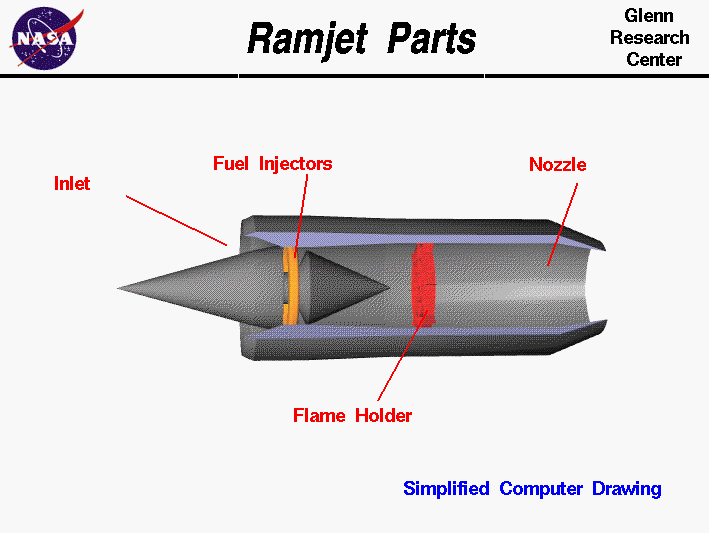Welcome to Read Ink! It's not often that we feature guests around here, but I figure an exception must certainly be made for the writer I have known longer than anyone else.
Hi, Mom!
Q. So. As I mentioned, you have been writing for as long as I can remember. But do you remember what your first piece of fiction was?
A.I can’t remember what it was, but I know I was writing in the third grade. But the first time I had anything published was in high school. In a national competition. I think it was a poem.
It was probably some deep, earnest adolescent wonderings about the meaning of life. I don't think I would want anyone to see it now.
Q. What inspired it?
A. What inspired it was being a teenager.
I also remember writing a play. I must have been 11 or 12 and a bunch of us put it on in someone's garage. But it was more like a theater version of a really bad silly movie. So it wasn't really an original idea. Some kind of family comedy. But I do remember that in one scene the father in the family had too much to drink, and that got me in trouble with some of our neighbors, who believed alcohol was evil.
Q. Sort of your first brush with censorship?
A. Yes!
Q. Writing for children, I imagine, takes a certain amount of insight into the way kids think. Did you ever tap into the fertile psyche of your son when he was young?
A.I tried. I don't know that I never tapped into his psyche. I observed him and his friends. But tapping into his psyche, no.
Q. What did you take away from those observations?
A. Just how open kids are and accepting, for the most part. And how they handle, I guess, defeat and not always being the top dog.
I have always tried to be as sure as I can that the kids in my stories and books act like real kids. That they're, if they face a problem, they face it like a kid would, not like an adult who can be pretty brainy about things. Kids tap into themselves. And they like to solve problems without the help of adults. So I try to not have adults get too meddling in my stories and books. I thought I tried to do that as a mother! Just ask my son.
Q. I remember sitting down with you and writing out my own stories--random stuff that you nonetheless helped me form into more-or-less coherent plots. What lessons do you think you taught me there that stuck with me into my adult writing career?
A. That the interesting stories, the real stories, are about problems that the characters solve. Like when we used to do the Mickey and Goofy stories, we were always solving problems. And you would sometimes bring up things from our life, like—I don't know if you remember this, when we got new locks on the front door, you were worried that they were too high or kind of stiff, and you worried that you wouldn't be able to get out if there was a problem. So we worked that out in a story. I can't remember exactly how, whether we put a stool by the door or what. So I think one thing that I hope you learned, that I know you learned but I don't know if you learned it from me, is that stories are about problems that people solve. And they don't just solve them with a snap of their fingers.
I wrote an article about [how children tell stories]—in some magazine. It was called “There's a Storyteller in Your Lap.”
Q. How did working with a small child who could barely scribble out his own name (still true as an adult, by the way) help you grow as a writer?
A. As a teacher, in general, you learn what you're trying to teach in a whole new way each time you teach it. And I know that was true of writing.
Q. So how has that affected your writing?
A. It’s gotten a lot better. Every time I write something, I'm more aware of being true to the characters, and making sure that the problem and the way they solve the problem is appropriate to the age of the kid. And keeping the adult voice out of things. When you write for kids, that's really important. Voice is important in any kind of writing.
Q. What sets apart the adult voice and kids' voices?
A. The same thing that sets kids and adults apart in real life. Kids generally tend to be more optimistic and hopeful and open. And probably more willing to try some things. They’re not always courageous, but they're more willing to make friends with someone who seems different from them than maybe an adult would be. I found that to be true.
Q. The conventional wisdom is that kids are more selfish or self-centered. It doesn’t sound like you feel that way.
Left to them... it's when the adults begin influencing them that they pick up a lot of behaviors that are negative and self-centered and superior. But I don't think kids come that way.
Q. How involved were your parents with your writing when you were a child?
A. They were really involved with my reading. We all read. There were books everywhere. They were always bringing the encyclopedias to the dinner table to settle arguments. And we were read to. Granddaddy used to read to me a lot. And he read himself. He had the complete set of Rudyard Kipling, and Zane Gray of course
(editor’s note: my grandfather was a huge fan of Westerns), and Robert Louis Stephenson.
He would read the Teeny-Weenies [to us]. And you know, like kids classics. Uncle Wiggly.
And we always got a book for Christmas. Which is why
you always get a book for Christmas.
Q. Was anyone encouraging you to write?
A. You know, I think I just kind of did it on my own. As you know the Picketts are great storytellers. But I don't remember sharing my writing. Now in high school when I started writing and working on the school paper and magazine, they were supportive, but I don’t remember that before. I think I won an essay contest in seventh grade. Probably some patriotic thing. And they were proud of that.
Mommer remembers me once--and I don't know how old I was--saying I thought I would die if I couldn't write. I must have been an adolescent. That sounds pretty adolescent.
But I don't write about teenagers now. I seem to be stuck at age 12. I taught that age for a long time. I guess when kids flip over into adolescence, they get too complicated for me or something. They have issues!
Q. What makes things like storytime important for kids?
A. First of all, if it's parent and child, it establishes a whole different kind of bond between the parent and child, because they're sharing a story someone else has written. So they have that shared experience they can talk about, ask questions about, learn which authors they like, and maybe talk about why. I think there's a whole arena of things you can do between a parent and child, and teacher and child, around reading. And you can help them, of course, develop their reading skills and listening skills.
Q. I remember the hoopla--at least, as perceived through the eyes of a grade-schooler--when "Old Enough for Magic" was published. We went to New York to meet your editor... my first time in such a big city. What was that like for you, to see one of your stories picked up by a major publisher?
A. Well, it was very exciting to have at that time, it was Harper and Row. They were a prestigious publisher and it was thrilling. It was wonderful.
The wonderful book.
Q. What was it like writing that book? Where did the story come from?
A. The story came together very quickly. And it was triggered by your experience. And I'm sure you know this, of the older neighborhood boys telling you that you weren't old enough for magic.
Q. Um… actually… I don’t quite remember that.
A. I had gotten you this magic set, because your father told you about his career as a childhood magician. So I went out and got you a magic set. You were on the front porch on Woodland
(editor’s note: the street on which I lived as a child in Midtown Kansas City). And you told the boys up the street that you were going to do a magic show. And the boys told you that you weren't old enough for magic.
The older sister [in “Old Enough for Magic”] was a neighbor girl when I was little who was very bossy and would never play with me unless I did exactly what she wanted. And her name was Arlene. So I put her in the story and named her Arlene!
People seemed interested in knowing the source of all the parts of the story. One thing kids are always interested in, after they ask how old you are and how much you make, is where do you get your ideas? And probably when you're a kid you don’t think anything interesting is going on in your own life. So you put your story in Shanghai or someplace you've never been, and have a king in it. You know. I think it takes a little maturity to see that the people around you and people you know and situations you have been in are really good story material.
But then the other mistake is to tell it exactly the way it happened.
Q. Can you give me an example?
A. My book
“Wasatch Summer,” I use that as an example of you can't just take a story… I heard this story about a little 8-year-old girl who had to take her family’s sheep into the mountains for the summer, and she was befriended by some Blackfeet Indians.
But that's not a book. You have to develop other settings and other problems in the story. You have to build from the kernel. You can't just tell things exactly the way they happened.
Q. You were a teacher and librarian for decades as well. What kind of insights or benefits did those experiences give you as a writer?
A. Just spending my days with kids gave me insight. Most of my kids were contemporary urban kids, but hearing their stories, their family stories, their neighborhood stories, not all of which were pleasant, made me realize that kids have a lot of things to overcome. And they do it, for the most part, with grace and determination. And often with a sense of humor. Not always.
And then when I was a librarian, it gave me a deeper appreciation of what happens when you connect with a kid over a book or a story. And that you can see some kids get turned onto reading if you can find just the right book to pull them into that world.
Q. Speaking of experiences, you and Dad did a little exploring in the Middle East when I lived there. You do a lot of traveling in the U.S. as well. How do your travels--at home and abroad--feed into your storytelling and idea generation?
A. Setting is a big thing that you get from traveling. And meeting different people with different views of life and different views of themselves. The two historical books, the one that's just coming out and the one that come out two years ago, both came out of ideas I had while traveling. And in both cases the place was an important part of the stories.
And I still have some stories I want to write about the Middle East. I want to write about the cats.
(Editor’s note: the herds of feral cats that roamed my Abu Dhabi neighborhood) I have to find the right way to tell it.
Feral cats. (More ornery than they look)
Q. I know you did a lot of on-the-ground research for "Wasatch Summer," visiting the areas in which the book is set. What kind of similar experiences did you gather for "Whisper Island"?
A. The idea for “Whisper Island” came a long time ago. I think the first time we went to the Outer Banks. Maybe 17 years ago, maybe longer. We went to a park ranger program about the shipwrecks. And this one story was about the George B. Wells, which was a triple-masted ship that ran around on one of the shoals. The first person that was carried off was the captain’s wife, who was very large and kept moaning about her clothes and her jewels. And then her two daughters. And then the crew started coming off. The captain was the last, of course. And he was carrying his St. Bernard, who he then gave to the life savers.
Which is what the girl in my book, the main character, wants to grow up to be: a life saver. But because she's a girl, it's against the law at that time. But she's kind of a feisty 12 year old. She figures some things out. She has two buddies, Will and Emory, and they all get up to some mischief.
Foreground: main character's hair. Background: her main pursuit.
Q. I noticed that the lifesaving station—which is still there—is set quite a ways back from the beach. Why?
A. Probably partly so it won't get washed away. And I really don't know how far away it was from the beach when it was built. Because those barrier islands are so thin, they get washed back and forth all the time. But I do know that at the time of the story, it was all flat. The dunes were put in later, I guess for a little protection.
Q. Your immediate plans, I'm sure, revolve around your book launch in North Carolina. And as a writer, I'm always hesitant to say too much about what I'm working on if it's not finished--I have these paranoid ideas that letting the idea loose in the world will somehow prevent it from being realized on the page. But if it's not giving away anything crucial, what other projects do you have in the works?A. A book about World War I set in Kansas City. Again about a 12 year old. But this time it's a boy. And he's got a lot of things to figure out. He’s learned that his older brother is not going to sign up to serve in the military. And then he learns that his favorite aunt, a very glamorous woman who lives in New York, is going to join the Marines. There’s other stuff going on with his best friend, who lives next door. He just has a lot of turmoil about what he’s supposed to think about all this.
We have the international World War I museum here. And the complete National Archives. They’ve both been very helpful in researching. And of course Mommer
(Editor’s note: Her mother, now 100 years old) was alive then, so she can fill in the cracks.
Q. Anything else you’d like to say about “Whisper Island”?
A. I think it's a good story about the spirit of determination. The story is a good one for kids to know about. And hardly anyone knows about the life savers and what they did, and what they still do as the Coast Guard. Their motto was "We have to go out, but we don't have to come back." so no matter what was going on, storms or whatever, they had to go out and do their work. And that's a good thing for kids and grownups to know.
Q. It seems like this is a theme for your children’s writing: kids being determined to persevere.
A. I think that was something instilled in me by my parents. Mommer would say, “If you want anything bad enough, you can do it.” And my brothers would say, “If I had no arms and no legs, I could swim the English Channel?” And she would say, “If you wanted it bad enough, you could do it.” And I think it's an important thing for people to have in them, to not get beaten down by people saying you can't do something.
For more about Mom, aka Anola Pickett, and her writing, visit her Web site, www.anolapickett.com. Her books are on sale at bookstores around the country and through these links at Amazon.com: Whisper Island; Wasatch Summer; Old Enough for Magic.




























